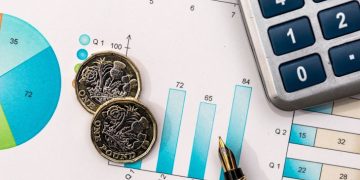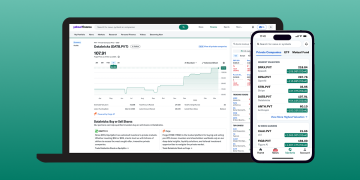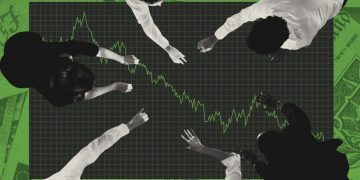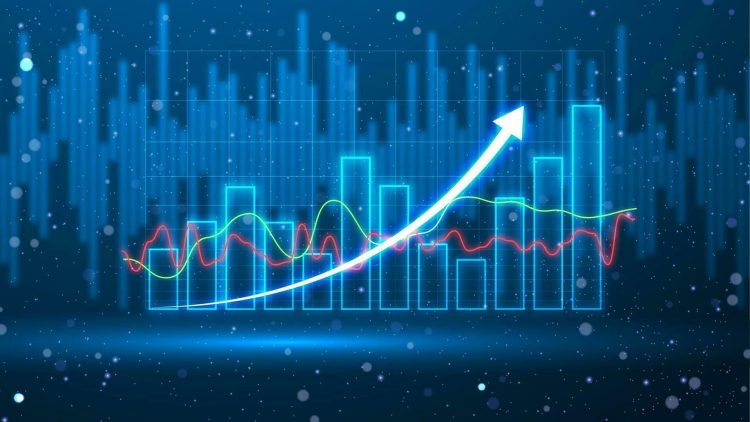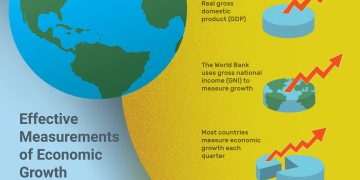As we step into the promising terrain of the “Roaring 2020s,” insights from Ed Yardeni, president of Yardeni Research, shine a light on the evolution of the U.S. economy. Having traversed through various technological revolutions, the current landscape suggests a remarkable rebound in productivity — a phenomenon that Yardeni posits might elevate the productivity growth rate from approximately 2% to as high as 4%. This optimistic outlook emerges within the broader context of technological advancements, particularly as we witness the ongoing digital revolution.
A Technological Renaissance
Yardeni highlights the transformative power of technology that began in the mid-20th century. From the advent of IBM’s mainframes to the rise of personal computers and cloud computing, each leap has substantially enhanced productivity. The evolution of artificial intelligence, described as an evolutionary rather than revolutionary force, facilitates significant advancements across various sectors by streamlining data processing and improving efficiency.
Resilience Amidst Uncertainty
The broader economic landscape, while peppered with potential pitfalls such as trade conflicts and geopolitical tensions, exhibits resilience. Yardeni forecasts a “rolling recession” rather than a comprehensive downturn, asserting that consumers and capital investments will display unprecedented elasticity. He predicts a robust trajectory for the S&P 500, projecting it could reach 7,000 by the end of 2024 and possibly soar to 10,000 by the end of the decade.
In an era marked by rising inflation concerns, Yardeni remains optimistic about productivity growth mitigating these pressures. He suggests that if productivity maintains its upward momentum, inflation could stabilize within a 2% to 3% range, reflecting a balanced approach to economic progress.
The Role of Federal Reserve Policies
At the heart of this discourse lies the Federal Reserve’s monetary policy. Yardeni articulates that the Fed’s recent decisions to adjust interest rates are both corrective and necessary, facilitating a smoother transition toward normalizing economic conditions. However, he cautions that further reductions in interest rates may inadvertently fuel excessive asset inflation, risking a market collapse similar to the dot-com bubble.

A Delicate Dance with Trade Conflicts
Yardeni warns about the ramifications of potential trade conflicts under a new political regime. Although he remains optimistic about the capacity for negotiation, he acknowledges that protective measures, such as tariffs, could create volatility in the market. Yet, he believes these outcomes won’t eclipse the significant benefits gleaned from technological progress.
High Valuations and Future Prospects
The notion that seven major tech stocks will continue to thrive underlines Yardeni’s perspective on the stock market’s dynamics. He envisions that these companies could account for approximately 30% of the S&P 500 index, maintaining high valuations. Thus, he proposes that investors remain vigilant, ensuring that their portfolios reflect the technological ethos that is transforming industries today.
The Future of Fiscal Responsibility
Turning to fiscal policy, Yardeni expresses hope that the incoming administration will prioritize reducing the deficit from 6% of GDP to 3%. He suggests that a focus on stimulating productivity and sustained economic growth will aid in achieving this goal, encouraging responsible governance that avoids superficial solutions.
Conclusion: A Bright Horizon
In summation, Ed Yardeni’s insights paint an optimistic picture of the U.S. economy as we venture deeper into the 2020s. While challenges lie ahead, advancements in technology and a resilient labor market provide a solid foundation for growth. The intricate interplay between the Federal Reserve’s monetary policies, market dynamics, and fiscal responsibility will shape the economic narrative of this decade — a narrative we can only hope continues to inspire prosperity.








